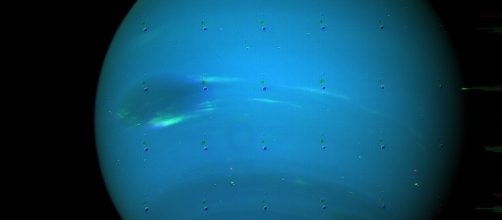September is a time for some splendid star gazing, as planets and constellations align. Neptune, lodging in the solar system’s outskirts, will be closest to earth this year. Bring out the binoculars and check out guides to see Neptune in front of the constellation Aquarius on September 5.
NASA says that as Neptune – the eighth farthest planet from the sun -- comes close to Earth, it may look like a faint star but will appear brighter to the eyes than at any other time of the year. The full moon will be swinging in front of Neptune on the evening of September 5 in the extreme southern part of the world.
Glimpse of the ice giant
With optical aids like a backyard telescope or mounted binoculars, scan the skies for a small blue-gray disk situated against the background of fainter stars. The view may be even better a few days past the time the planet – known as the ice giant – sits opposite the sun.
Neptune is one the planets in the solar system that has intrigued people. The planet, from cosmic experts’ perspective, represents the power of the natural world. Neptune is the Roman god of the seas and the name Neptune is also known to control spiritual natures. Astrologers advise people to use the planet’s energy to improve their lives.
Neptune has also been explored by space scientists. The ice giant has been the subject of a study, led by the research team of Dominik Kraus from Germany.
The research team discovered that diamond rain on the planet (as well as Uranus) is a possibility.
Must-see celestial wonders
Although not really that close to Earth, being approximately 2.7 billion miles away from our planet, a good view of Neptune is one of the must-see sky events unfolding this September. Stargazers keen on seeing more celestial wonders can look forward to at least four bright planets that will light up the September skies.
Venus is set to dazzle as it gets quite close to Regulus – the lead star in the constellation Leo – in September. Venus is a planet that has challenged space explorers for years. Superpowers, including the US, have studied Venus from afar. The Soviets landed on the planet 30 years ago. Today, the Russians are mulling on revisiting Venus.
Four years ago, many sky watchers focused on Venus to catch the first-magnitude star Regulus in the evening dusk. Venus outshone Regulus by a hundredfold. The sighting occurred in July 2013.
This September, other planets that may be seen by avid stargazers are Venus are Mars and Mercury. According to Earthsky, on September 17, an ethereal lineup of cosmic attractions, including the thin crescent moon perching itself above dazzling planet Venus will be seen. Saturn will seem to be quite close to the moon (or less than three degrees from the ringed planet) on September 26.


